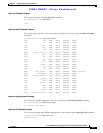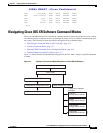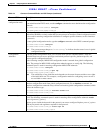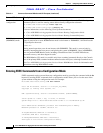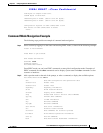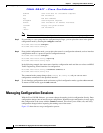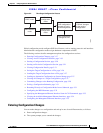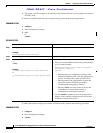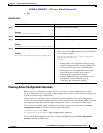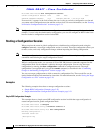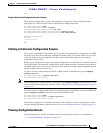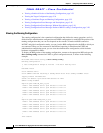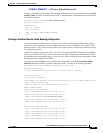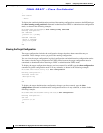
FINAL DRAFT —Cisco Confidential
3-17
Cisco ASR 9000 Series Aggregation Services Router Getting Started Guide
OL-17502-01
Chapter 3 Configuring General Router Features
Managing Configuration Sessions
Figure 3-2 Two-Stage Configuration Process
Global configuration mode configures RSP-level features, such as routing protocols and interfaces.
Administration configuration mode assigns hardware components to RSPs.
The following sections describe management options for configuration sessions:
• Entering Configuration Changes, page 3-17
• Viewing Active Configuration Sessions, page 3-19
• Starting a Configuration Session, page 3-20
• Starting an Exclusive Configuration Session, page 3-21
• Viewing Configuration Details, page 3-21
• Saving the Target Configuration to a File, page 3-26
• Loading the Target Configuration from a File, page 3-27
• Loading an Alternative Configuration at System Startup, page 3-27
• Clearing All Changes to a Target Configuration, page 3-27
• Committing Changes to the Running Configuration, page 3-28
• Exiting a Configuration Submode, page 3-31
• Returning Directly to Configuration Mode from a Submode, page 3-31
• Configuring the RSP Hostname, page 3-32
• Specifying the Management Ethernet Interface Name in CLI Commands, page 3-33
• Viewing the Available Management Ethernet Interfaces, page 3-34
• Configuring the Management Ethernet Interface, page 3-35
Entering Configuration Changes
You can make changes to a configuration and end up in one of two different modes, as follows:
1. Enter configuration changes.
2. The system prompts you to commit the changes.
EXEC mode
Global
configuration
mode
Administration
mode
Administration
configuration
mode
Stage 1:
Enter configuration
changes or load a
saved configuration.
Save configuration
changes to a file.
Stage 2:
"Commit" changes
to the running
configuration.
149946



